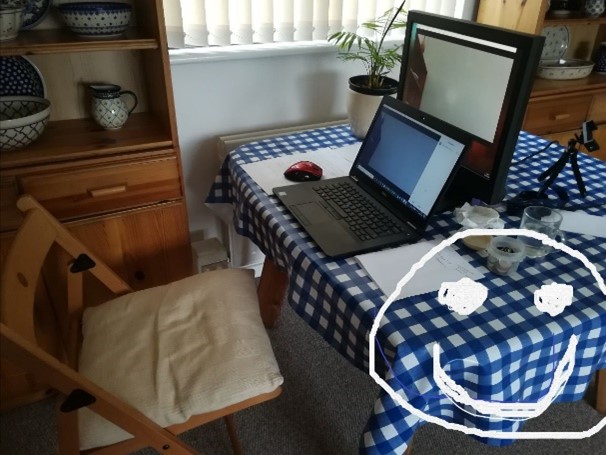Below is a blog written by one of our wonderful ESOL (English for Speakers of Other Languages) teachers, Christie. We wanted to share it, simply to highlight the *huge* amount of work that goes into making these online lessons effective. Our teachers have made an incredible effort this year to develop new teaching skills, new lesson content and coach their students to develop the technological skills to access their online classes. And it’s not just the teachers who have had to adjust and learn a whole new set of skills; it’s also been a really big step for a lot of our learners. They have had so much to deal with and adapt to during the last year – they have faced financial and employment insecurity, had to home-school their children, worry about the health of family and friends in other countries and yet they still dedicate hours of their week to learning how to access zoom so that they can develop their language skills at home. It is massively out of their comfort zone and it’s a real testament to their resilience that they commit to it anyway! We’ve also loved to see the way that friends and members of the community have been willing to share their knowledge and help others get to grips with apps like Zoom, Teams and other online platforms!
– –
There are numerous challenges getting started in teaching ESOL learners online. So picture me on the phone with ‘B’, whose only device is a phone.
Me: You need to install the Zoom app. Z-o-o-m.
B: No understand.
Me: App store? Install Zoom? (I use Whatsapp to send him a photo of the app on my screen)
B: Ohhh…. (he struggles and mutters and asks incoherent questions while I wait. 20 minutes go by. He is not successful)
B: Go my friend, he help. (he hangs up. I was glad to know he has a friend. An hour goes by.)
N: Hello, I’m B’s friend. How can I help?
Me: (really relieved to deal with a bilingual Kurd. I explain.)
N: Ok. (he struggles and mutters and talks to B in Kurdish. 30 minutes go by. It turns out N does not know what to do.)
Me: Ok, N, please stay there with B. I’m going to find help. (I call my co-worker Jonathan who knows a lot of Kurds, asking for a number for someone bilingual and up on their technology. Soon get a call from Ali. I explain. He knows the other guys. He calls them. Another hour goes by.)
N: (calling from his car outside a supermarket where he had taken B to do some shopping). We did it! We have Zoom in B’s phone! (Another 15 minutes go by. When B comes back to the car, we do a test run so he will know how to use the app. Great to see B smiling from the back seat. I praise the efforts of everyone involved. It only took four hours.)
I had to find a bilingual supporter for each person in the class, either someone in the home or at least reachable by phone, and work with that person to help the student get comfortable with this way of learning. One great side benefit is that zoom lessons have introduced several young Kurds, new arrivals living in different areas, who are all isolated and stuck at home. They use the break times to get to know each other.
Two of the Kurdish boys started well but in the third lesson they were lolling on the floor, faces half in, half out of the frame, I didn’t have a translator available, so I showed what I wanted them to do with pictures:
Thank the Lord, students are connected, support is provided, and they are learning remotely, in this time when we cannot be in the same space.
Christie Murphy – ESOL teacher
April 2021



